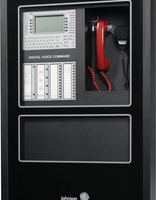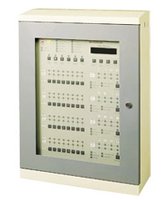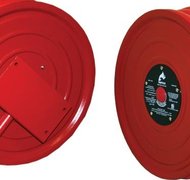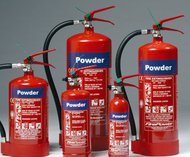
Al Mousiraat International L.L.C
Fire Alarm Systems
Addressable Fire Alarm Systems:

An addressable system is much more advanced than the non-addressable system. The addressable system has a higher degree of programming flexibility and single-point detection. Addressable fire alarm systems provide all the functions provided by the non-addressable conventional systems. The addressable system allows installation of more devices, providing greater coverage. There is no restriction on the amount of programming features to be implemented in the system. Some of the more common programming features include fire door release, door access control override to assist in evacuation, time delay activation, phased evacuation for multi-level buildings, signalling to all other types of fire equipment such as sprinkler systems, monitoring station alert, and smoke damper shutdown, etc.

Conventional Fire Alarm Systems:
A conventional non-addressable system usually includes a fire alarm control panel (FACP). FACP receives information from devices throughout the property, which is designed to detect changes associated with a fire event, including water flow or detection of smoke. A map of the building is often placed at a strategic location with the defined zones and indicators that illuminate when a zone is in an alarm condition. The main drawback is that the activated device cannot be detected, and only zone can be identified. The fire may be in only one small area, but the emergency indicators only reveal that the larger zone is in alarm. This type of system is also capable of dialling an offsite monitoring service, shutting down gas supply, turning on smoke exhaust fans, and connecting to other fire alarm panels.
Fire Fighting Systems
Portable fire extinguishers are a tool for suppression of fire in its incipient phase, and are present in UW System facilities. Fire extinguisherThe most common fire extinguisher uses a dry chemical powder to extinguish flames, while some use pressurized water or wet chemicals. Other extinguishers use carbon dioxide. Carbon dioxide extinguishers can be used on electrical fires, as they do not leave a residue which might damage electrical equipment, but they should not be used in confined spaces where the carbon dioxide may replace oxygen. Each type of extinguisher is to be used to put out a specific type, or “class,” of fire.

Fire hose reels are located to provide a reasonably accessible and controlled supply of water to combat a potential fire risk. The length of a fully extended fire hose is between 18 and 36 meters with a diameter of 13 or 19mm Internal Diameter. These appliances are designed to deliver, as a minimum, 0.33ltrs of water per second. A control nozzle attached to the end of the hose enables the operator to control the direction and flow of water to the fire. All fire hose reels come with a unique ball or gate valve shut off device, a plastic or solid brass hose reel nozzle, and mounting bracket.
A wide range of effective Fire Fighting Cabinets, Fire Hose Cabinets and Fire Hose Reel of 1 ½ “ and 2 ½ “ Cabinets are manufactured from Electro Galvanized steel sheet with folded edges and hose plate edges are curled to assure safe handling. Fire Hose Cabinets are fabricated by metal inert gas welding process followed by good surface preparation before being electro statically painted by using red polyester resin paint to give hard wearing resistance, and finish.
Fire Hose Cabinets are available in two types:
Surface Mounted
Recessed

